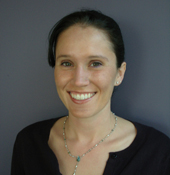If you’re a native of rural Mozambique who contracts HIV and becomes symptomatic, before seeking clinical testing and treatment, you’ll likely consult a traditional healer.
Your healer may well conclude that your complaints are caused by a curse, perhaps placed upon you by a neighbor or by the spirit of an ancestor. To help you battle your predicament, the healer will likely cut your skin with a razor blade and rub medicinal herbs into the cut.

A recent survey of symptomatic HIV-positive people in rural Mozambique, led by Carolyn Audet, Ph.D., M.A., assistant professor of Health Policy, found that individuals who initially consulted traditional healers had a 2.4 times longer delay between the onset of symptoms and diagnosis of HIV than those who did not consult healers. Among a total of 517 study respondents newly diagnosed with HIV, 62 percent saw a healer before seeking clinical care.
For study respondents who did not visit a healer, the median time from first symptoms to a clinical visit was two months, while it was three months for those who saw a single healer and nine months for those who saw two or more healers.
The study respondents were asked about diagnoses and treatment provided by healers, and the most commonly reported diagnoses were curses (56 percent), biological causes (15 percent) and angered spirits (10 percent). Among respondents who saw a single healer, 55 percent were administered herbs subcutaneously, using razor blades and rubbing the herbs into the cuts.
The study appears in the Journal of Acquired Immune Deficiency Syndromes.
Sten Vermund, M.D., the Amos Christie Professor of Global Health and director of the Vanderbilt Institute for Global Health, was among the study’s co-authors.
“Carolyn’s findings give a sense of urgency to the need to engage traditional healers both to encourage referrals of sick patients and to support, rather than undermine, the lifelong antiretroviral therapy regimen,” Vermund said.
In Mozambique as elsewhere in sub-Saharan Africa, university-trained doctors are in very short supply but traditional healers are numerous. Compared to doctors, healers also may be more in step with African consumers’ beliefs about the spiritual causes of illness and preferences for treatment.
Religion pervades the outlook and practices of these healers. To effect cures, they routinely supplement herbalism with incantation, divination and various forms of “magic.”
The prevalence of HIV/AIDS among Mozambicans age 15 to 49 is estimated to be at least 11 percent (in the United States it’s 0.6 percent).
Some African countries recently have sought to integrate Western medicine and traditional healers. The study authors outline recent health system efforts to facilitate referral of HIV/AIDS patients by traditional healers.
“Educating traditional healers to recognize and refer people with AIDS has had limited success,” Vermund said. “We need to develop and test new models to incentivize these referrals, and we need to ensure that health care workers welcome such referrals and follow through with testing.”
Others on the research team included Meridith Blevins, M.Sc., biostatistician III, and researchers from the Peace Corps and from Friends in Global Health, an oversees component of the Vanderbilt health system. The study was supported by the Centers for Disease Control and Prevention and by a grant from the NIH (TR000446).












